Red Lentil Vegan Pancakes
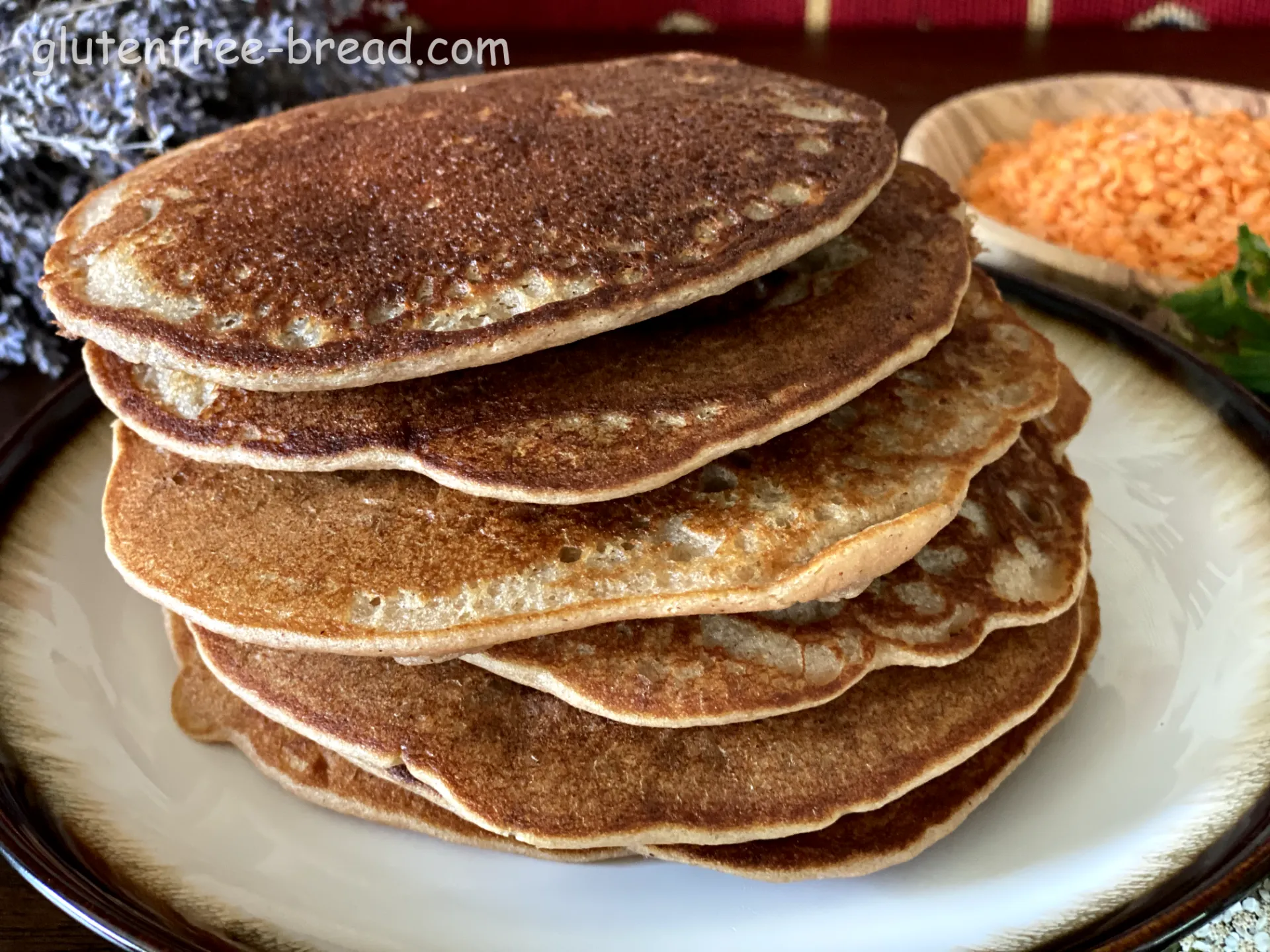
Ingredients:
| Name | Metric | US | TIP | |
|---|---|---|---|---|
| Red Lentils, soaked | 185 gr | 1 cup | ||
| Plant-Based Milk | 120 ml | 1/2 cup | ||
| Coconut Sugar | 12 gr | 1 tablespoon | ||
| Coconut Oil, optional | 6 ml | 1 teaspoon | ||
| Baking Soda | 3 gr | 1/2 teaspoon | ||
| Lemon Juice / Apple Cider Vinegar | 15 ml | 1 tablespoon | ||
| Salt | 3 gr | 1/2 teaspoon | ||
| Allspice | 6 gr | 1 teaspoon | ||
| Banana | 1 | 1 |
Equipment:
| Blender |
Steps:
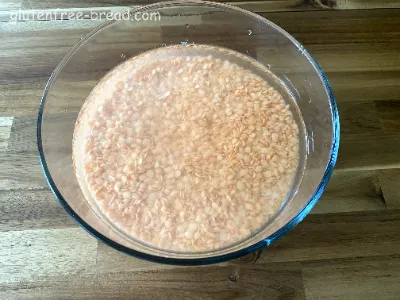
Step 1
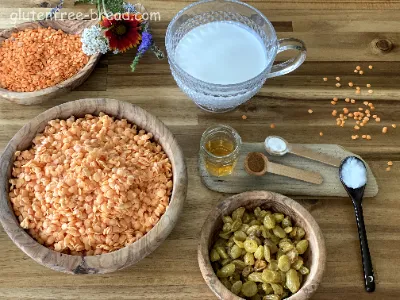
Step 2

Step 3
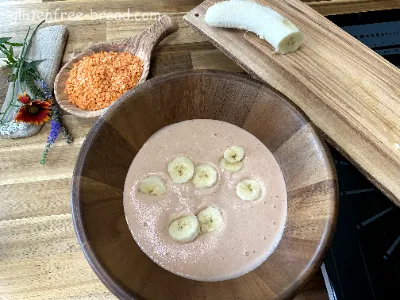
Step 4
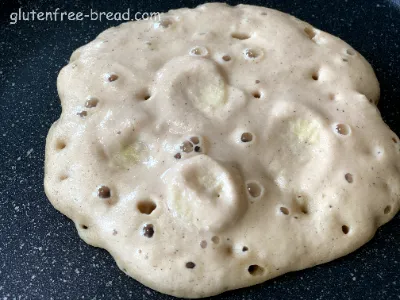
Step 5

Step 6
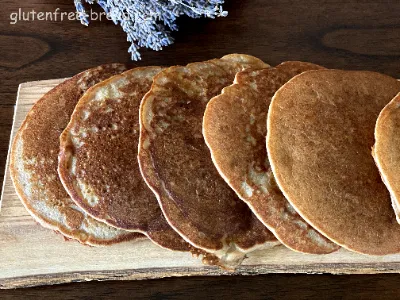
Step 7
Notes:
Red Lentil Vegan Pancakes
Adding sliced bananas directly into the pancake batter can make flipping a bit more challenging due to their tendency to sink and potentially disrupt the pancake structure. However, here are some tips to help you manage this:
Slice Thickness: Cut the banana into thin rounds. Thin slices will distribute more evenly throughout the batter and cook more consistently.
Adjust Batter Consistency: Ensure your pancake batter is not too thin or too thick. If it's too thin, the bananas may sink more easily. If it's too thick, it can be harder to cook through without burning the outside.
Cooking Temperature: Use a medium-low heat setting on your skillet or griddle. This allows the pancakes to cook slowly and evenly, giving the bananas time to heat through without burning the outside of the pancake.
Pouring Batter: Pour a small amount of batter onto the skillet or griddle and then gently press a few slices of banana into the batter. This helps the bananas adhere to the batter and prevents them from sinking too much.
Flip Carefully: When flipping the pancakes, use a thin, wide spatula. Start from the edge closest to you and work your way towards the center. This helps maintain the shape of the pancake and prevents the bananas from shifting.
Patience: Allow the pancakes to cook on one side until bubbles form on the surface and the edges look set before flipping. This ensures that the pancake is firm enough to flip without breaking apart.
Practice: It may take a few tries to get the hang of flipping pancakes with bananas in the batter. Don't worry if the first few pancakes are not perfect; practice will help you refine your technique.
By following these tips, you should be able to successfully incorporate sliced bananas directly into your pancake batter and flip them without too much difficulty. Enjoy your delicious banana pancakes!
Red Lentil Vegan Pancakes additional information:
Here are the benefits of soaking lentils overnight:
Improved Digestibility: Lentils contain compounds such as phytic acid and enzyme inhibitors that can inhibit nutrient absorption and cause digestive discomfort. Soaking helps break down these compounds, making lentils easier to digest.
Enhanced Nutrient Absorption: Soaking helps release nutrients like iron, zinc, and magnesium, making them more bioavailable for absorption by the body. This improves the nutritional value of lentils.
Reduced Antinutrients: Soaking reduces antinutrients like phytates, which can bind to minerals and reduce their absorption in the body. Lower levels of antinutrients mean better nutrient utilization from the lentils.
Improved Texture: Soaked lentils tend to cook more evenly and have a softer texture compared to unsoaked lentils, which can sometimes cook unevenly or remain firm in the center.
In summary, soaking lentils overnight is a beneficial practice that can enhance their digestibility, improve nutrient absorption, reduce antinutrients, and result in better texture in your dishes. These benefits contribute to making lentils a nutritious and versatile ingredient in various recipes.
Red lentils are incredibly versatile and can be used in a variety of sweet and savory dishes, as well as in main courses, salads, and even desserts. Here’s how they can be enjoyed across different types of recipes:
Sweet Dishes:
- Red Lentil Desserts: Red lentils can be used in desserts such as puddings or sweet pancakes, where they add a creamy texture and subtle nutty flavor. Sweetened with ingredients like maple syrup or agave syrup, they make for a unique and nutritious treat.
Savory Dishes:
- Curries and Stews: Red lentils are commonly used in Indian and Middle Eastern cuisines to make hearty curries and stews. They cook down to a soft consistency, adding thickness and protein to the dish.
- Soups: Red lentils are ideal for soups due to their quick cooking time and ability to thicken broths naturally. They pair well with vegetables and spices to create comforting and nutritious soups.
- Dips and Spreads: Red lentils can be cooked and blended into dips and spreads, such as hummus or lentil pâté, adding a creamy texture and protein boost.
Main Dishes:
- Lentil Burgers: Red lentils can be combined with vegetables, herbs, and spices to make flavorful and hearty veggie burgers or patties.
- Lentil Loaf: Similar to meatloaf, lentil loaf is a vegetarian alternative made with red lentils, breadcrumbs, and seasonings, baked until golden and served with a savory sauce.
Salads and Sides:
- Lentil Salads: Cooked red lentils can be chilled and tossed with fresh vegetables, herbs, and a tangy vinaigrette to make a refreshing and protein-packed salad.
- Grain Bowls: Red lentils are a great addition to grain bowls, adding protein and texture alongside grains like quinoa or bulgur, and topped with roasted vegetables and a flavorful dressing.
Desserts:
- Red Lentil Cakes: Red lentils can be used to make cakes and desserts, where they add moisture and a slightly nutty flavor. They can be incorporated into baked goods like muffins or cookies for added nutrition.
Overall, red lentils are prized for their versatility, nutritional benefits, and ability to adapt to various cuisines and culinary styles. Whether sweet or savory, as a main dish or side, red lentils offer a delicious and nutritious addition to a wide range of recipes.
Red lentils offer a range of nutritional benefits, making them a valuable addition to a balanced diet. Here are some of the key nutritional benefits of red lentils:
High Protein Content: Red lentils are rich in plant-based protein, making them an excellent protein source for vegetarians and vegans. A 1-cup serving of cooked red lentils provides about 18 grams of protein, helping to support muscle repair and growth.
Rich in Dietary Fiber: Red lentils are high in dietary fiber, which aids digestion, promotes bowel regularity, and helps control blood sugar levels. A 1-cup serving of cooked red lentils provides around 16 grams of dietary fiber.
Low in Fat: Red lentils are low in fat, particularly saturated fat, making them a heart-healthy choice. They provide essential fatty acids, including omega-3 and omega-6 fatty acids, which are beneficial for overall health.
Rich in Essential Nutrients: Red lentils are a good source of essential vitamins and minerals, including folate (important for fetal development and preventing neural tube defects), iron (essential for oxygen transport and energy production), potassium (important for heart health and muscle function), and manganese (which supports bone health and wound healing).
Antioxidant Properties: Red lentils contain antioxidants such as polyphenols, which help protect cells from damage caused by free radicals. These antioxidants may contribute to reducing the risk of chronic diseases like heart disease and certain cancers.
Supports Weight Management: Due to their high protein and fiber content, red lentils can help promote satiety and reduce appetite, which may aid in weight management and weight loss efforts.
Versatility in Cooking: Red lentils are versatile and can be incorporated into a wide variety of dishes, from soups and stews to salads, curries, and even desserts, providing nutrient density and flavor.
In summary, red lentils are not only delicious and versatile but also offer a range of health benefits due to their high protein, fiber, and nutrient content. Including red lentils regularly in your diet can contribute to overall health and well-being.







